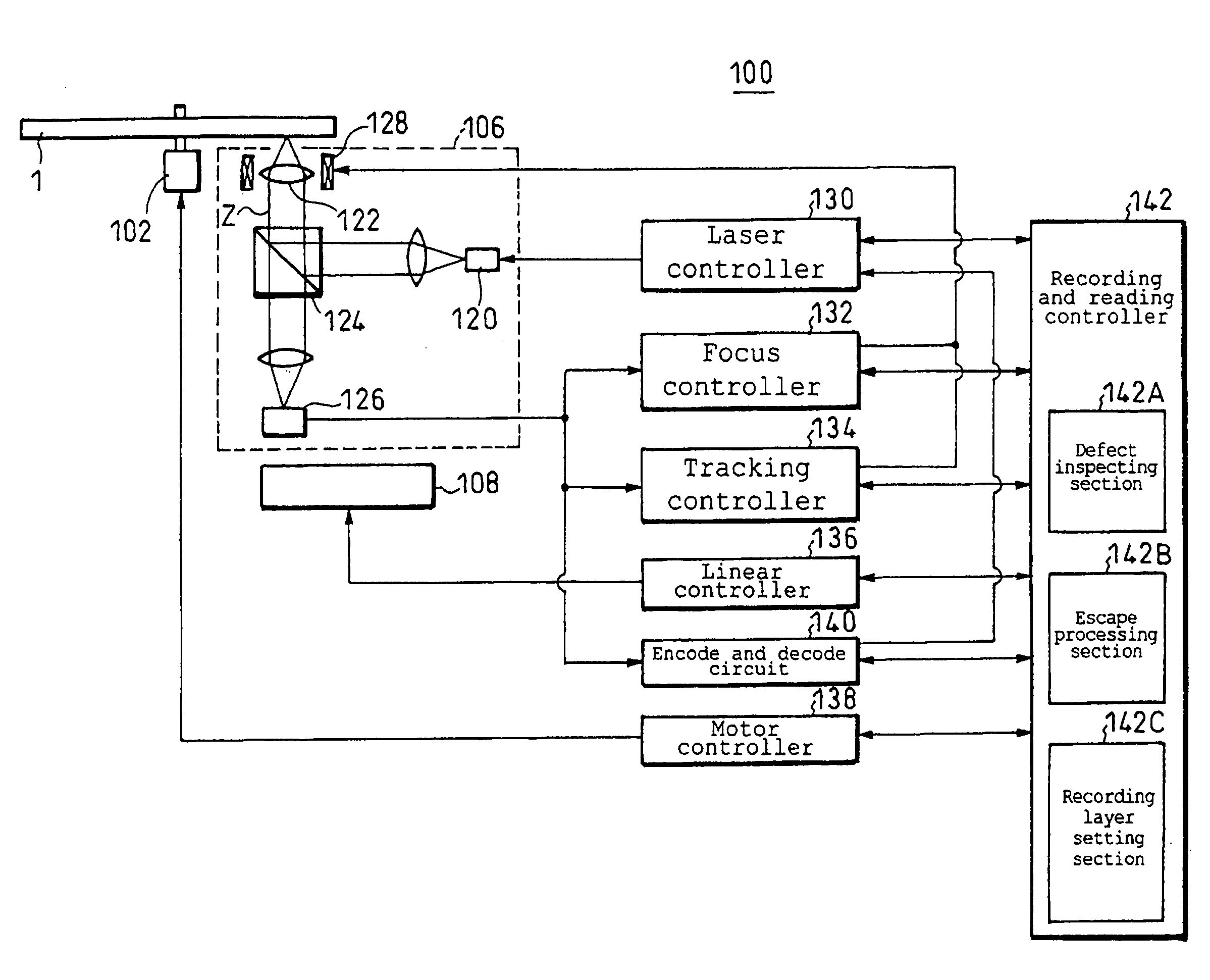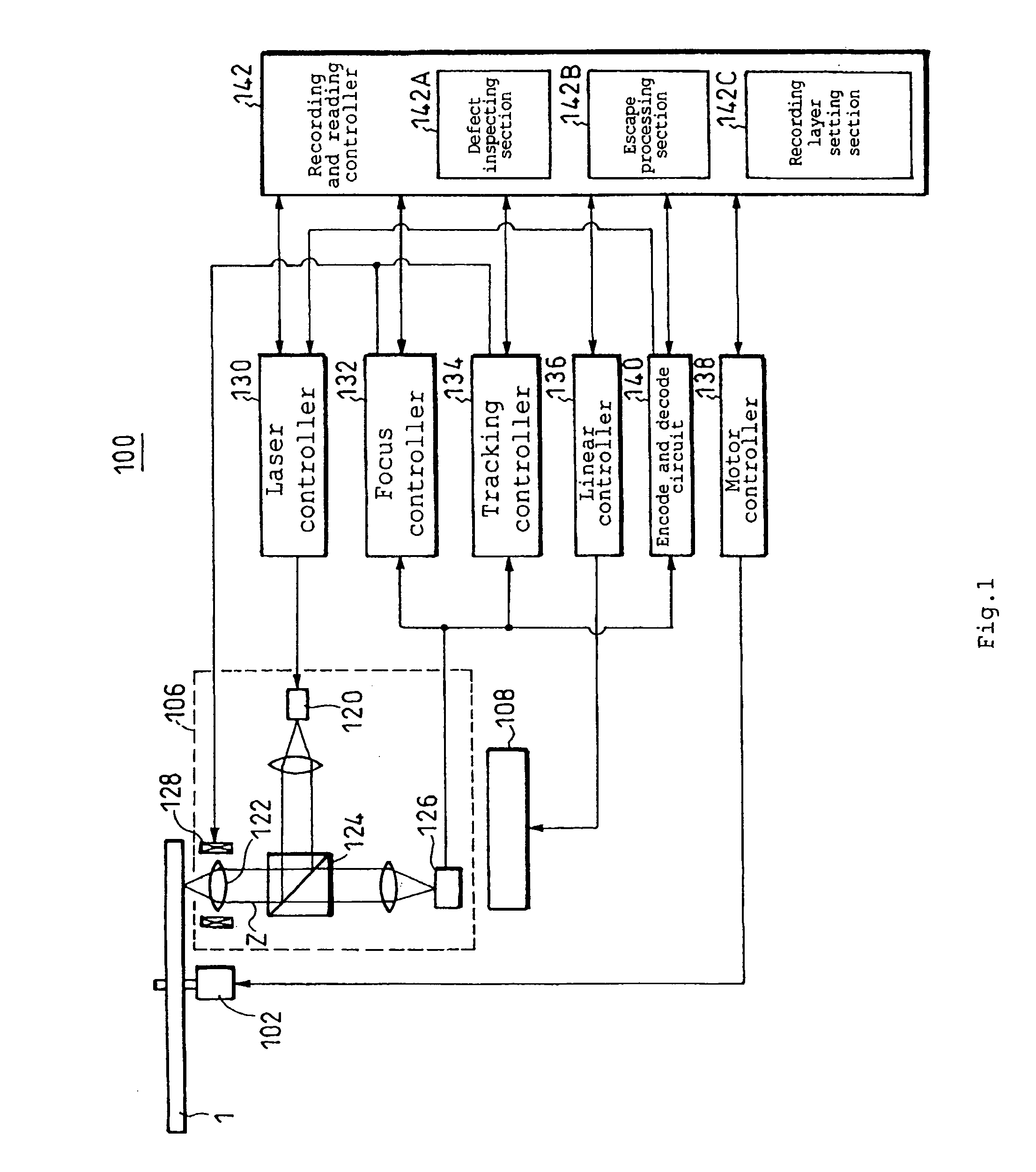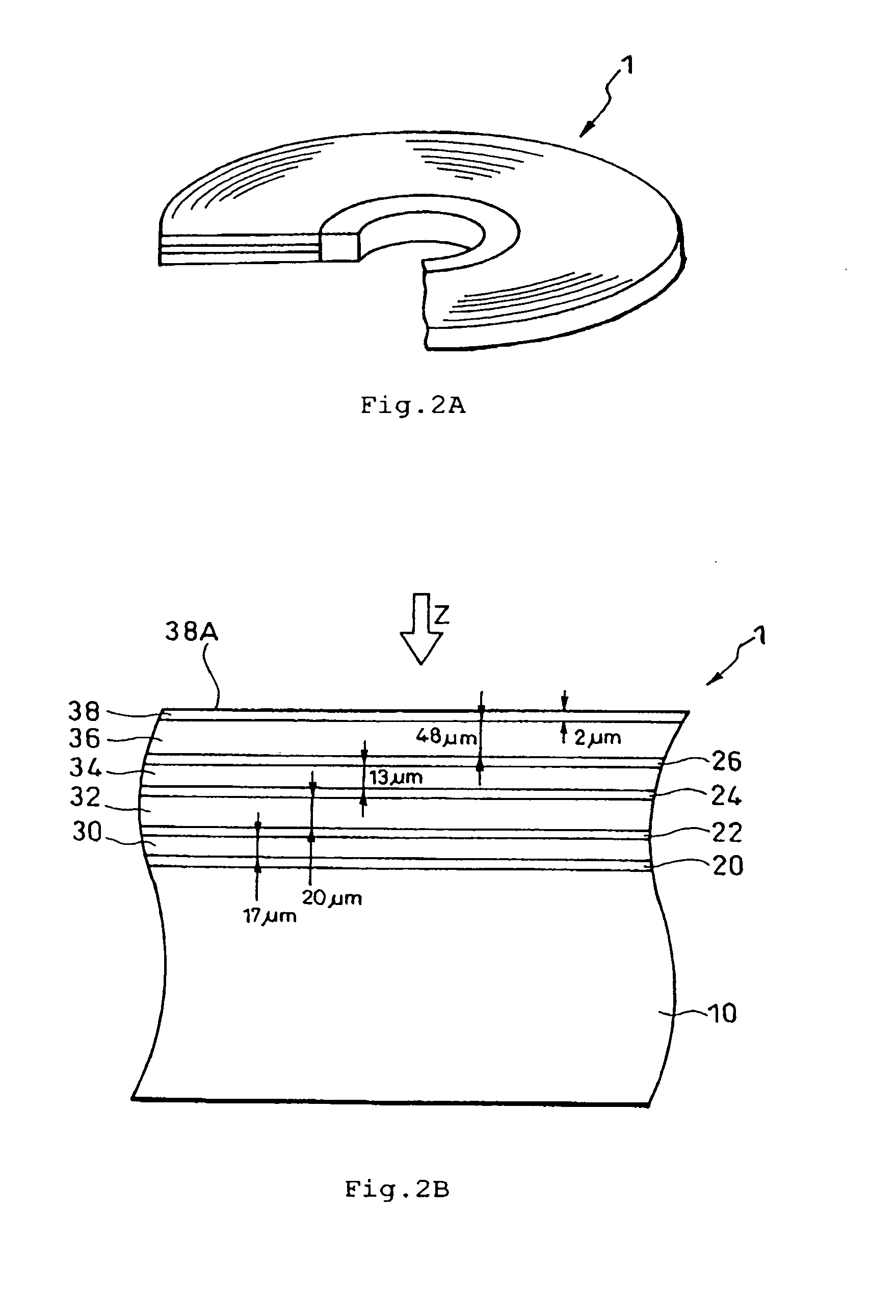Optical recording method on multilayer optical recording medium, optical recording apparatus, and multilayer optical recording medium
a multi-layer optical recording medium and optical recording technology, applied in the detection/correction of digital signals, instruments, recording signals, etc., can solve problems such as recording errors, recording errors, recording errors, etc., and achieve the effect of limiting any reduction in recording rate and storage capacity
- Summary
- Abstract
- Description
- Claims
- Application Information
AI Technical Summary
Benefits of technology
Problems solved by technology
Method used
Image
Examples
Embodiment Construction
[0030]Embodiments of the present invention will be described in detail with reference to the accompanying drawings.
[0031]FIG. 1 shows a recording and reproducing apparatus 100 which illustrates an optical recording method according to various embodiments of the present invention. The recording and reproducing apparatus 100 is provided with a motor 102, an optical pickup 106, and a linear drive mechanism 108. The motor 102 rotates an optical recording medium 1. The optical pickup 106 irradiates the optical recording medium 1 with a beam spot to record and reproduce information. The linear drive mechanism 108 linearly drives the optical pickup 106 in a radial direction of the optical recording medium 1. The optical recording medium 1 is a multilayer optical recording medium which has a plurality of recording layers for recording information on.
[0032]The optical pickup 106 is provided with a laser light source 120, an objective lens 122, a half mirror 124, a photo-detection device 126,...
PUM
 Login to View More
Login to View More Abstract
Description
Claims
Application Information
 Login to View More
Login to View More - R&D
- Intellectual Property
- Life Sciences
- Materials
- Tech Scout
- Unparalleled Data Quality
- Higher Quality Content
- 60% Fewer Hallucinations
Browse by: Latest US Patents, China's latest patents, Technical Efficacy Thesaurus, Application Domain, Technology Topic, Popular Technical Reports.
© 2025 PatSnap. All rights reserved.Legal|Privacy policy|Modern Slavery Act Transparency Statement|Sitemap|About US| Contact US: help@patsnap.com



